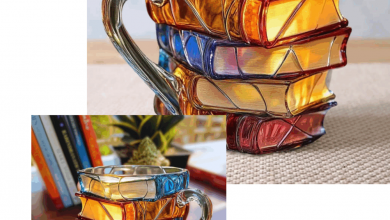Next-Generation CMP Pads: Enhancing Efficiency in Chip Fabrication

Chemical Mechanical Planarization (CMP) is one of the least visible but most critical steps in semiconductor fabrication. It determines how precisely each wafer layer aligns before the next deposition, influencing both yield and device performance. As transistors shrink and multi-layer interconnects proliferate, the industry faces mounting challenges in achieving defect-free surfaces without excessive slurry waste or tool downtime.
Dr. Harini Bhuvaneswari Gunasekaran, a Senior Researcher at Clarkson University and Invited Reviewer for the Springer Journal of Materials Science, develops polyurethane pad architectures designed for slurry-free or slurry-light CMP. Her research focuses on functional polymers with carboxylic and sulfonic groups that capture metal ions during polishing without sacrificing pad life or mechanical integrity. By stabilizing removal rates and reducing defectivity, she is helping fabs achieve cleaner wafers and more predictable production cycles.
Throughput Signals and Demand Pressure
As fabs chase smaller geometries, CMP throughput and process uptime have become as decisive as etch precision. According to WSTS, the semiconductor market is projected to reach $700.9 billion in 2025, an 11.2% annual expansion that reflects AI-driven data-center demand. SEMI forecasts global fab capacity to climb 7% in 2025, marking a second straight year of growth, while Forrester expects worldwide tech spend to surpass $4.9 trillion that same year.
The combined effect is pressure on CMP systems to deliver higher utilization without compromising surface finish. With wafer starts climbing and tool utilization nearing theoretical limits, even minor process variability compounds across thousands of layers. Dr. Gunasekaran’s polyurethane systems, engineered for mechanical stability and metal-ion chelation, address precisely this challenge by reducing pad change frequency and enabling slurry-free operation that lowers both downtime and consumable cost.
“Efficiency in CMP is contrary to polishing faster; it concerns polishing smarter and stabilizing performance so every wafer leaves the line predictable and clean,” states Gunasekaran.
Contamination Control and Surface Purity
As metal stacks diversify, contamination control defines both yield and reliability. A U.S. Bureau of Industry and Security study found chips fabricated by PRC-based foundries represent only 2.8% of unit count in surveyed end products, illustrating how minor contamination sources can propagate globally. Within fabs, the semiconductor metrology and inspection market, critical for contamination detection, reached $17.31 billion in 2024, and is expected to grow at a CAGR of 6/1% to $23.30 billion by 2029, underscoring the industry’s focus on defect detection and ultra-trace surface analysis.
Dr. Gunasekaran’s CMP pad chemistry embeds chelating functionality within the polymer matrix and tunes cross-link density to maintain mechanical resilience while actively binding stray metal ions. Using DSC, TGA, DMA, NMR, IR, UV-Vis, SEM and AFM, she demonstrated resistance to swelling and delamination through extended polishing cycles.
“Contamination is a yield tax. If the pad traps what leaks, every downstream step has less to correct,” notes Gunasekaran.
Process Stability and Yield Reliability
Moving from contamination control to line performance, the critical question is whether CMP behavior stays steady across long runs so wafer yield holds. A 1% gain in wafer yield directly reduces per-device cost by about $0.01, which compounds across millions of dies. McKinsey notes that bringing a new fab from decision to a high yield operating state typically takes more than three years, which is why stable CMP windows are a priority during ramp. Capital signals reinforce this push for stability, with over $1 trillion of accumulated semiconductor equipment spending from 2024 to 2030, a scale that concentrates attention on unit operations that protect yield, including CMP.
Dr. Harini Bhuvaneswari Gunasekaran’s polyurethane pad research tackles that challenge directly. By balancing cross-link density to maintain constant modulus and recovery during polishing, and embedding chelating groups that capture stray metal ions, her pads keep friction and removal rates steady through extended runs. The result is smoother post-CMP topography, fewer micro-scratches and measurable improvement in lot-to-lot yield consistency.
“Stability begins in the polymer. If the pad behaves the same at hour one and hour ten, metrology trends flatten in the right direction,” notes Gunasekaran.
Workforce and Operations
Carrying stability from process conditions to daily practice, the next requirement is people and routines that keep pad behavior consistent at scale. In the United States, the direct chip workforce is slated to add 115,000 roles by 2030, yet current pipelines could leave 67,000 of those positions unfilled. Public investment is responding. States have committed over $300M to semiconductor workforce programs working alongside CHIPS awards. On the factory floor, safety and consistency are the baseline for adoption, with an injury incidence rate of 0.4 per 100 workers reported for semiconductor and related device manufacturing, a level that depends on documented procedures and repeatable training.
At Clarkson University, Dr. Harini Bhuvaneswari Gunasekaran runs that translation loop with discipline. She documents resin formulations and esterification steps, sets explicit pour and curing windows that account for shorter working time at higher functionality and validates every batch with DSC, TGA, DMA, SEM and AFM before any polishing trials. She supervises student researchers to reproduce small batches under controlled timing and temperature, records the property matrix that maps to removal stability and packages procedures so a pilot line can adopt them without guesswork.
“Repeatability turns chemistry into manufacturing. Once a formulation can be taught and audited, it can be scaled,” says Gunasekaran.
Looking Ahead — Materials-First CMP for the AI Decade
As AI accelerators multiply transistor density and heat budgets, the number of CMP steps per wafer keeps climbing. The CMP market reached $6.01 billion in 2023 and is projected to approach $9.68 billion by 2030, driven by new pad and slurry materials that can sustain high removal-rate uniformity at extreme pattern densities. Analysts expect the 69% growth in advanced-node capacity through 2028 to be fueled primarily by AI-chip manufacturing, where planarity tolerance at 2 nm and below has reached angstrom-level precision.
These advances contribute to a broader inflection point: the semiconductor sector as a whole is projected to exceed $1 trillion in annual revenue by 2030, sustaining roughly 8.6% compound growth through the decade. Achieving that scale will depend on process stability—and on materials engineered to keep surfaces defect-free as device architectures become more vertically integrated.
Dr. Harini Bhuvaneswari Gunasekaran’s work sits at the center of that shift. Her polyurethane-based CMP pads are designed for predictable compressibility, consistent recovery and metal-ion control—critical for stable planarization in AI-class wafers with stacked logic and memory tiers. Her leadership as Associate Editor for the SARC Journal of Economics Intelligence and Technology reflects her commitment to connecting materials research with industrial standards shaping the next fabrication decade.
“The future of CMP is polymeric intelligence—materials that know when to yield, when to hold and when to heal,” states Gunasekaran.

Source: Next-Generation CMP Pads: Enhancing Efficiency in Chip Fabrication



